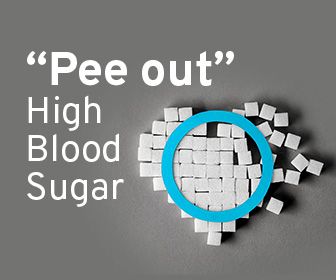Craving something sweet is a biochemical response rooted in blood sugar fluctuations, brain chemistry, and emotional conditioning. The moment sugar hits the system, it triggers a chain reaction that affects metabolism, energy, and even mood. The more sugar the body gets, the more it wants, trapping people in a cycle that’s hard to break.
This cycle is no accident. Food manufacturers engineer processed foods to keep cravings alive, slipping sugar into unexpected places like yogurt, salad dressing, and even bread. Meanwhile, the brain rewards sugar intake by releasing dopamine, reinforcing the craving. What starts as a momentary indulgence often turns into an unconscious habit, leaving the body reliant on sugar for energy and emotional comfort.
Understanding the sugar cycle is the first step in breaking free. By recognizing the patterns that drive cravings, it becomes possible to regain control—without relying on sheer willpower alone.
1. The Blood Sugar Rollercoaster: The Real Cause of Constant Cravings
Eating sugar creates an immediate spike in blood glucose, delivering a quick burst of energy and a temporary sense of alertness. But that energy doesn’t last. The body responds by releasing insulin, which clears sugar from the bloodstream rapidly—often too rapidly—leading to a crash.
This sudden dip in blood sugar leaves you feeling:
Tired and sluggish
Irritable or anxious
Hungry again, specifically for more sugar
This explains why having a doughnut for breakfast can leave you craving something sweet again by mid-morning. Instead of fueling the body properly, sugar sets off a cycle of highs and lows that keep cravings alive.
A more stable energy supply comes from foods that digest slowly and keep blood sugar balanced—like protein, fiber, and healthy fats. Choosing eggs, nuts, or Greek yogurt in the morning instead of sugary cereals or pastries prevents the rollercoaster from starting in the first place.
2. Sugar’s Impact on Mood and Energy
Sugar doesn’t just affect energy levels—it also plays a major role in mood regulation. The brain depends on a steady glucose supply to function properly. Wild fluctuations in blood sugar can lead to emotional instability, causing mood swings, irritability, and even symptoms of anxiety or depression.
Some people feel euphoric right after eating sugar, only to crash into feelings of fatigue or irritability an hour later. This cycle makes sugar an emotional trap—when energy dips, the body craves another hit, leading to a reliance on quick fixes rather than long-term nourishment.
Stabilizing blood sugar through whole foods keeps mood and energy steady throughout the day. Instead of relying on sugar for a quick dopamine boost, getting enough sleep, regular movement, and protein-rich meals can support emotional balance naturally.
3. Sugar and the Brain’s Reward System: Why It Feels Addictive
The brain is wired to seek out pleasurable experiences. Sugar triggers a surge of dopamine, the neurotransmitter responsible for feelings of reward and pleasure. This response is similar to what happens with addictive substances like alcohol or nicotine.
Over time, the brain adapts. The more sugar consumed, the weaker the dopamine response becomes, meaning larger amounts are needed to achieve the same “feel-good” effect. This leads to increased cravings, emotional dependency on sugar, and difficulty breaking free from the cycle.
The solution isn’t to eliminate all sweetness overnight but to retrain the brain by reducing sugar gradually and replacing it with whole, nutrient-dense foods. Natural alternatives like berries, dark chocolate, or cinnamon can help satisfy cravings while breaking the dependence on processed sugar.
4. How Gut Bacteria Influence Sugar Cravings
The microbiome—the trillions of bacteria in the gut—can influence cravings, digestion, and even mental health. Certain bacteria thrive on sugar, and when they dominate, they signal the brain to crave more. This is why sugar cravings can feel so intense after a period of indulging in sweets.
A gut microbiome overloaded with sugar-feeding bacteria can lead to:
Increased sugar cravings
Poor digestion and bloating
Weakened immune function
Balancing gut bacteria by incorporating fermented foods (yogurt, sauerkraut, kimchi) and prebiotic fibers (vegetables, nuts, whole grains) can reduce sugar cravings at the root. Over time, as gut bacteria shift toward a healthier balance, the intense pull toward sweets begins to fade naturally.
5. Emotional Eating: Why Sugar Becomes a Comfort
Cravings aren’t always physical—they’re often emotional. Sugar is deeply linked to comfort, nostalgia, and reward. From childhood treats to celebrations, many people associate sweets with positive emotions, making it harder to break the habit.
Stress and boredom are two of the biggest triggers for emotional eating. When under pressure, the body releases cortisol, a hormone that increases sugar cravings as part of the body’s fight-or-flight response. Sugar temporarily soothes stress but ultimately keeps the cycle going, making energy crashes and mood swings even worse.
Developing alternative coping mechanisms—such as walking, deep breathing, or engaging in a favorite activity—can reduce the need for sugar as an emotional crutch. Finding pleasure in non-food-related rewards helps rewire the brain’s association with sugar and stress relief.
6. Hidden Sugars in Everyday Foods
Most sugar consumption doesn’t come from candy or desserts—it’s hidden in everyday processed foods. Bread, sauces, salad dressings, and even “healthy” snacks like granola bars often contain more sugar than expected.
Food manufacturers disguise sugar under different names, such as:
High-fructose corn syrup
Maltodextrin
Cane juice
Agave nectar
Checking ingredient labels and focusing on whole, unprocessed foods reduces exposure to hidden sugars, naturally lowering cravings over time.
7. Poor Sleep Increases Sugar Cravings
Lack of sleep disrupts hunger hormones, making sugar cravings even harder to resist. When sleep-deprived, the body produces more ghrelin (the hunger hormone) and less leptin (the satiety hormone), leading to increased appetite and stronger cravings for fast energy sources like sugar.
Just one night of poor sleep can:
Increase cravings for high-calorie, sugary foods
Decrease impulse control, making it harder to resist temptations
Lead to fatigue, which the body compensates for with quick-fix energy from sugar
Prioritizing quality sleep—by sticking to a regular schedule, reducing blue light exposure at night, and maintaining a cool bedroom—helps regulate appetite and reduces unnecessary cravings.
Breaking the Sugar Cycle for Good
Cravings aren’t random—they’re signals from the body that something is out of balance. Blood sugar instability, dopamine-driven reward responses, gut imbalances, and emotional triggers all play a role in the body’s demand for sugar.
Breaking free doesn’t mean eliminating sugar entirely but learning to reset the body’s natural balance. Replacing processed sugars with nutrient-dense foods, improving sleep, managing stress, and balancing gut bacteria all contribute to reducing cravings naturally.
Sugar addiction isn’t a personal weakness—it’s a biological response that can be rewired with the right approach. Don't rely on willpower alone, understand the science behind cravings and make sustainable choices that work with the body instead of against it.





